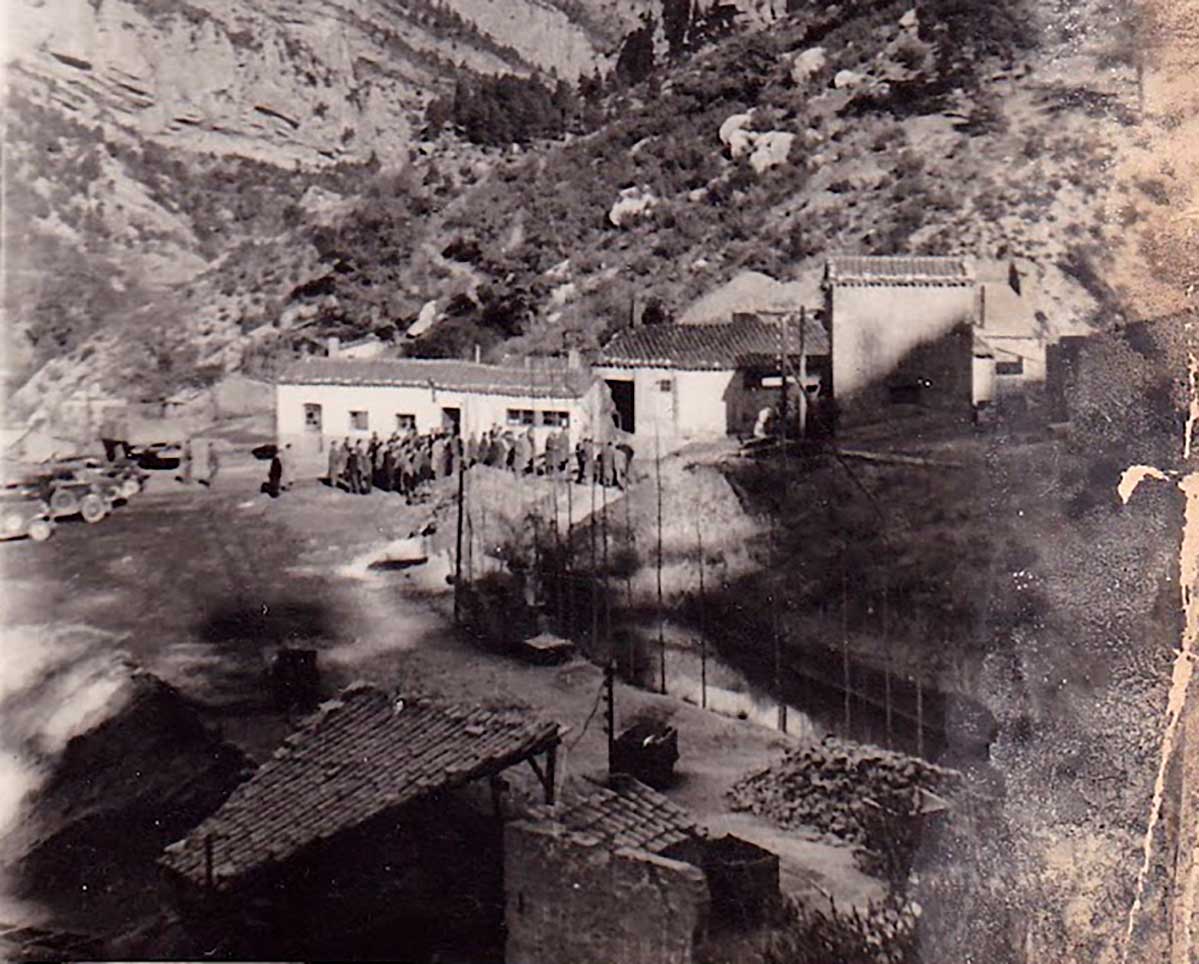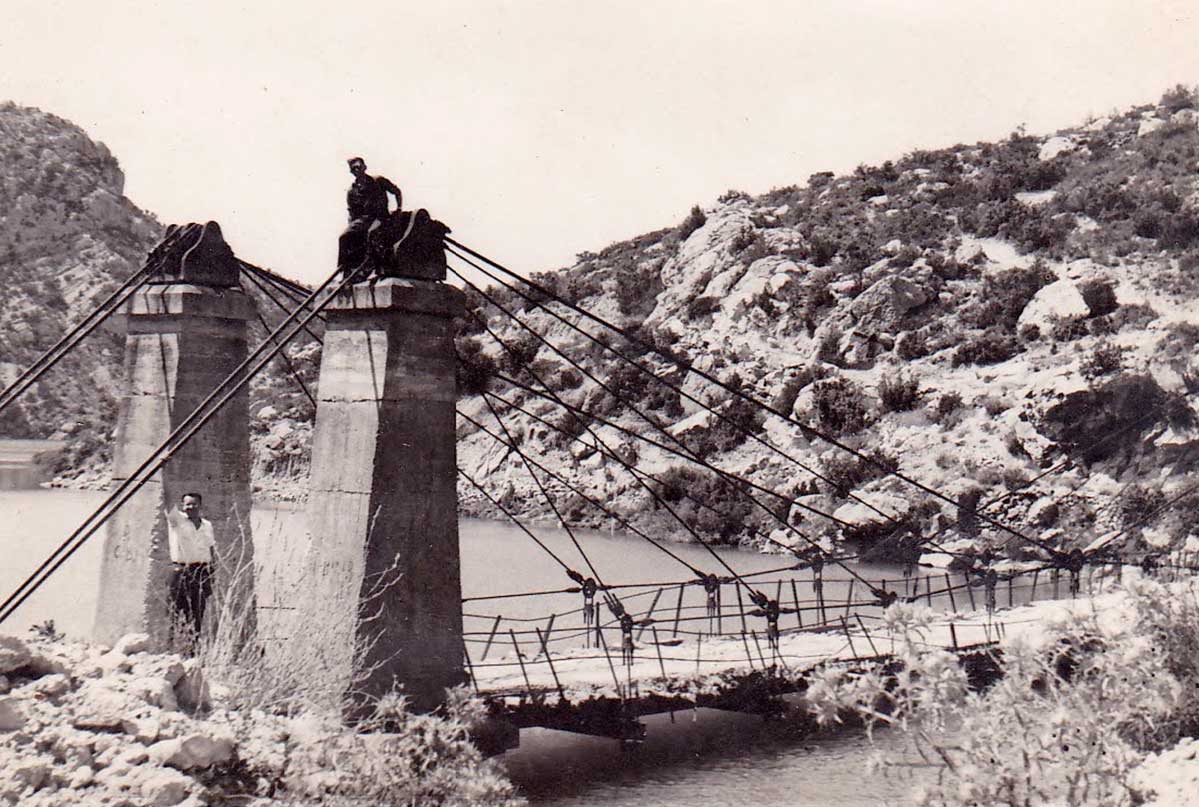
The Corçà Mines: a memory of a mining past in Montsec
Between the mountains of El Montsec and the banks of the Noguera Ribagorçana river, the remains of an industrial past that is almost forgotten today are hidden: the coal mines of Corçà. These farms played a fundamental role in the economic and social development of the Àger valley during the twentieth century, and even today they arouse the interest of residents, historians and visitors who want to better understand the lives of those who worked between dark galleries and heavy days.
The origins of mines and exploitation
Mining activity in Corçà dates back to before the Spanish Civil War, but it was during the decades of the forties to sixties that coal exploitation reached its maximum splendour. In the midst of the Franco regime, and in a context of economic autarky, coal became an essential energy resource to power industries and railway networks.
The mines of Corçà produced good quality coal, and although its production was not massive at the state level, it was important enough to mobilize labor and generate its own economy around them.
Operating companies: investments and interests
The exploitation of the mines was in the hands of several private companies, but one of the most prominent figures was Antonio Martínez Navarro, a businessman linked to the Murcian mining sector. Martínez Navarro had experience in lead operations in Murcia (such as the Mimofer mines), and he transferred part of this model to Corçà, where he sent workers of humble origins and with little technical training, known as ramperos.
This hiring system offered a job opportunity to young people who, in many cases, escaped compulsory military service in exchange for doing “military service in the mine”, a common phenomenon in the post-war period

The Workers: A Diverse Mining Community
The miners of Corçà came from various parts of the territory:
- Local residents of Corçà, Àger, Agulló and nearby villages.
- Aragonese workers from the towns of Montfalcó, Tolva, Ciscar, Finestres, etc.
- Asturian and Murcian miners, accustomed to the hard work of underground galleries.
This mixture of origins gave rise to a plural, cohesive and socially active community. Despite the harsh working conditions, with long hours and a lot of humidity in the galleries, the miners and their families formed their own nucleus of coexistence.
Seven family houses were built, a barracks for bachelors, and even a canteen-shop, where food was sold and moments of rest were shared. Major festivals were also organized, with music and activities, despite the isolation of the place.

Key infrastructures
To facilitate exploitation, a path was opened from Àger to Corçà and a suspension bridge was built over the Noguera Ribagorçana, which allowed the connection with the town of Montfalcó, on the Aragonese side. These infrastructures not only served to transport coal, but also to connect communities that, until then, had lived quite isolated.

Decline and disappearance
The decline of the mines came at the end of the 60s for several reasons:
- The depletion of coal seams.
- The high cost of operation.
- The progressive abandonment of mining in favor of other energy sources.
- And above all, the construction of the Canelles reservoir, which flooded part of the valley and the galleries.
With the closure, many families left and the area fell into oblivion. The buildings were abandoned, the accesses deteriorated and the mining legacy was covered by water and silence.
Rediscovery and future
The prolonged droughts of recent years have brought to the surface the visible remains of the old mines of Corçà, which can be seen when the level of the Canelles reservoir drops. This fact has aroused the interest of the City Council of Àger and local entities, which are committed to preserving and signposting these spaces as historical and cultural heritage.
The aim is to create an interpretive route that allows the history of the mines to be revived, to value the landscape and to attract tourism that is respectful and sensitive to the memory of the territory

Conclusion
The mines of Corçà are not just an industrial trace: they are the footprint of a generation that worked underground to build a possible future, in very harsh conditions but with a spirit of community. Rediscovering them and explaining their history is a duty to the collective memory and an opportunity to enrich the cultural heritage of the Àger valley.
NN


